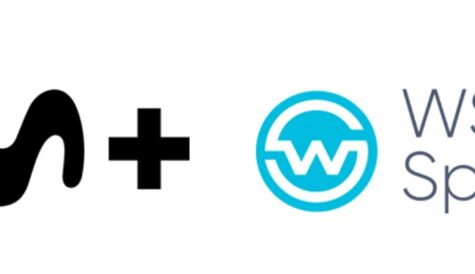The Middle ground: premium TV in the Middle East and North Africa
Despite the region’s overwhelmingly free-to-air profile, competition is heating up in premium TV in MENA, with continued growth for BeIN Sports and OSN and the development of new OTT offerings. Rebecca Hawkes reports.
It is often said that TV in the Arab world bears little or no resemblance to other international markets. Characterised by free-to-air satellite, content piracy, vast disparity in infrastructure and incomes, large diverse expatriate communities, and over 20 regulatory entities, the Middle East and North Africa (MENA) is a distinct and challenging environment for pay TV operators.
Yet despite this, the past year has seen steady growth in the region’s pay TV market, with revenues of €873 million in 2014, up from €702 million a year earlier, according to IHS Research. The number of pay TV households in MENA rose to 4.8 million in 2014, representing 12.4% growth year-on-year, accordng to IHS.
In a region of around 60 million homes, however, the pay TV base remains small. Satellite is the prime platform for delivery of both pay TV and the estimated 900 free-to-air channels, although IPTV and OTT video services are rising alongside increased broadband penetration in both MENA’s fixed and mobile communications market.
Sport versus entertainment
Two players dominate the pay TV sector in the region: OSN and beIN Sports (previously Al Jazeera Sport). The latter’s rise to prominence has coincided with its avid collecting of major international sporting rights, including the Olympics; football’s World Cup, English Premier League and Spain’s La Liga; Formula 1 motor racing; and NBA basketball.
It is estimated the Qatar-based operator will attract an extra 768,000 subscribers to grow its base to 1,389,000 by 2020, and increase its revenues from US$281 million (€247 million) in 2014 to US$724 million in 2020, according to recent figures from Digital TV Research. Until now beIN has restricted its offering to sports, but this looks set to change with beIN Movie channels being trailed in the region, and the acquisition by parent company beIN Media Group of Turkish pay-TV platform Digiturk in July 2015. Digiturk, which has around 3.5 million subscribers in Turkey, offers a mix of premium sports and entertainment titles – through ties with, among others, Hollywood studios Disney, Paramount, 20th Century Fox, Warner Brothers, Universal, HBO and Lionsgate.
“Expansion into the Turkish market is a natural next step for the beIN Media Group due to [the] proximity of [the] Turkish market to [the] MENA region,” said Nasser Al-Khelaïfi, chairman and CEO of beIN Media, announcing the long-anticipated acquisition.
Constantinos Papavassilipoulos, senior analyst at IHS, believes the Digiturk acquisition will have knock-on effects for beIN Sports Arabia. “One way or another beIN Media will enter the entertainment content market. It will do so in Turkey, for sure, but the Middle East is its homeland, so I think it is only a matter of time,” he says.
If beIN Media is looking to capture some of the regional entertainment market, Papavassilipoulos fears it could trigger a potential price war in the sector – a mirror image of the spiralling figures spent on premium sports rights in the Middle East.
General entertainment in the MENA pay TV sector has so far been dominated by OSN, which offers a wide array of Hollywood, Arabic, Filipino and South Asian content, aimed at the diverse communities of the region, both nationals and expatriates.
“In general, the pay TV operators’ offer in Arabic content used to be very poor but, kick started by the success of Turkish dramas in the Arab world, operators are now investing in quality Arabic productions to attract a wider audience,” says Papavassilipoulos.
OSN’s Arabic channel OSN Ya Hala HD, now in its fourth year, is a good example of this. It offered 12 new Arabic series for Ramadan 2015 plus catch-up service Ma Fatak TV, allowing users to watch over 20 Arabic drama shows either online or on TV.
Come 2016, OSN Ya Hala HD will launch Saturday Night Live Arabia (an Arabic version of the US sketch show), along with localised versions of Prison Break, Mad Men, Ugly Betty and Who Wants To Be a Millionaire. Kosem Sultan (a spin off of the successful Turkish drama series Hareem Al Sultan) is also among OSN’s new content, and an Arabic movie channel, Ya Hala Cinema HD, is also planned for launch next year – no doubt helped by OSN’s recent arrangement of a US$400 million financing facility.
“While connectivity has redefined how TV is enjoyed globally, one of the new trends in the industry is how audiences look for regional content that they can relate to. We are bringing more regional flavour with the widest assortment of Arabic programming next year,” says Khulud Abu Homos, OSN’s executive vice-president, programming and creative services. As well as improved Arabic content, OSN’s South Asian offering has been significantly boosted with its acquisition two years ago of the Pelha pay TV platform. The operator is not neglecting western content though, with the 2016 launch of an HBO-dedicated channel offering, among others, Game of Thrones, True Detective, Girls and Veep, as well as extending a long standing partnership with Hollywood’s Warner Bros.
OSN is on course to add 630,000 subscribers between 2014 and 2020 to reach 1,704,000 subscribers, estimates Digital TV Research. The consultancy believes its revenues will rise from US$579 million to US$903 million in the same period.
The French-speaking markets of North Africa and the Levant, however, are still growth targets for OSN, which remains more popular in the Gulf region. Premium French content has long been on its radar, but there have been no recent additions.
Enter Starz Play
OSN has however made concerted efforts to attract a younger, digital-savvy audience in a region where 60% of the population is under 35, and 70% of online content is now consumed by mobile devices.
May 2015 saw the launch of Go by OSN, a standalone OTT ‘skinny’ bundle. The service, available via fixed line, WiFi, 3G and 4G networks, does not require a full subscription to OSN but instead costs US$10 a month – way below the US$100 monthly cost of its Platinum satellite delivered package.
In 2014 beIN Sports relaunched its OTT service, beIN Sports Connect, and now sells smartphone and tablet subscriptions on a daily, monthly or annual basis, as well as offering its satellite subscribers free desktop access to its channels. [icitspot id=”454272″ template=”box-story”]
These and other OTT services have recently been joined by Starz Play Arabia, which was introduced, softly, in April 2015. It is the first international foray for the US cable company Starz – creator of titles such as Black Sails, Power, Spartacus – and is streaming Hollywood content on-demand to consumers for US$13.99 a month.
Maaz Sheikh, chief executive, Starz Play International, says the reasons the company opted for MENA is down to the potential size of the broadband market, the pay TV landscape, and finally, the current OTT landscape.
“The broadband market – both fixed and mobile – is extremely attractive. There are about 14 million fixed broadband users in MENA, a figure set to grow to 20 million by 2020. But mobile broadband is where the market is even more attractive: there are 25 million 3G and 4G customers now, and by some estimates this base will grow to 75 million by 2020,” says Maaz Sheikh.
“Although 80% of the broadband market is currently in the Gulf Cooperation Council [GCC] countries, and as a percentage of overall households across MENA broadband penetration is quite low, particularly in North Africa – from our perspective that just means there is more to come,” he says.
Maaz Sheikh accepts his former employer OSN remains the dominant provider of subscription entertainment in the region. However its satellite services are, he says “not at a price point that the masses can afford.” This, combined with studios looking for a diversification in the way their content is distributed to reach more viewers, provides an opening for Starz Play Arabia.
The subscription video-on-demand (SVoD) operator’s strategy is to provide premium movies and series at the time of broadcast in their country of origin, be that the US with content from CBS, Showtime, Starz, or Sony, or from the UK – as it has recently done with the Channel 4 series Humans and ITV’s Broadchurch. Current series will be shown exclusively on the platform. In addition, Starz Play Arabia aims to launch Arabic shows by the first quarter of 2016. “We have to have content and programming that goes beyond Hollywood, and we’re looking at both acquiring content from local producers and developing our own,” says Maaz Sheikh.
Although Netflix is yet to launch in MENA, Starz Play Arabia does face OTT competition from local players Istikana and icflix, which launched an offering of Arabic (‘Jazwood’), Bollywood and Hollywood content two years ago. “No one had done anything like this from the region and we did not know what to expect. We knew there was a demand…but once we launched we had to cross a lot of hurdles [including] localisation and monetisation of content,” says icflix’s CEO Carlos Tibi. “Although icflix had a fairly large library of content, we were not completely sure what people’s tastes were and what age groups would be interested. We had an idea that it would be the younger generation. Then when we launched we saw it was not just the younger crowd, but the older generation was also interested because of Jazwood [Arabic content].”
Icflix has evolved its business model to offer pay-per-view (PPV) alongside subscription due to demand for the latest content straight after its cinematic release – and related issues of piracy. Advertising supported VoD (AVoD) is also now offered; where viewers can watch select Hollywood documentaries, select Bollywood titles and Arabic TV series for free.
Other than icflix’s original Arabic productions, which include the films HIV and Al-Makida, and TV series Alf Leila we Leila (Arabian Nights), the content it carries is non-exclusive. “Because today in the digital era, as soon as movies are out they are pirated in high quality and become available across thousands of sites,” says Tibi.
Over 60% of icflix’s subscriber base of 700,000 comes from the UAE, Morocco and Egypt. It is also popular in Saudi Arabia, Kuwait, Bahrain, Tunisia and Algeria, and the number of subscribers is growing 25% month-on-month, claims Tibi. While action, horror, drama and sci-fi are the most popular genres, language is key to different markets. “In the Middle East it’s Arabic and English language content. In North Africa a lot of French, Spanish and Arabic, while the Levant speaks mainly French and Arabic. So with each country we localise the content to that user’s preference,” says Tibi.
Pricing is also adjusted for the North African market to make it an affordable alternative to piracy, and the platform’s technology can go as low as 256kbps where broadband speeds are not very high.
Both these OTT operators are also working with local telecom operators to carry their video streaming services on IPTV platforms in Bahrain, Egypt, Jordan, Lebanon, Morocco, Oman, Qatar, Saudi Arabia and the UAE.
“For us, partnering with telecommunications operators is important as it brings the brand tradeability and legitimacy that the consumer is looking for. Starz Play is still a new brand in the market,” says Maaz Sheikh. “It’s good for both parties strategically – we bring the telecom operator the content and they provide us with brand credibility and easy billing and sign on options for the subscriber.”
Starz Play Arabia already has deals in Qatar, Oman, Kuwait, Tunisia and Algeria, with more likely to be announced soon. Meanwhile icflix has arrangements with seven operators, including three group agreements with Zain, Orange and Qatar’s Ooredoo, with further discussions underway.
UAE telco du also offers both these VoD offerings as part of its wider duTV IPTV fixed and mobile service, which now reaches 10,000 subscribers. Du provides 950 TV channels, both premium and free-to-air, along with just under 3,000 video assets for its on-demand offer – though it expects this to rise to 6,000 video assets in 2016, says Samer Geissah, du’s vice president, consumer home and multimedia services.
“In October 2014 we launched Du View, a multiscreen companion to the home IPTV service, free of charge to our existing subscribers,” says Geissah. “It offers around 2,000 video assets and 79 linear channels – though this will be pushed to 300 live TV channels by early 2016.” A new Du View app will be available in November, with personal bookmarking to help viewers find where they left off when binge viewing box sets, plus a dedicated area providing Dubai-based videos shot in 360 degrees. Du is also in talks with Hollywood studios to provide the same feature with some of their content. Plans are afoot to launch an OTT version of Du View, which anyone in the UAE will be able to use, not just du’s existing IPTV subscribers.
Pay TV providers OSN, beIN Sports, Abu Dhabi Media Corporation’s Abu Dhabi Sports, icflix and Starz Play Arabia are all carried on du’s IPTV platform – something seen throughout the GCC states. “In the end it’s the subscribers’ choice whose platform they watch content on, and they will choose the best offer. Ours is a comprehensive HD content offering, truly multicultural, with live TV from the Middle East, Asia, Europe. We have a large library of relevant content – and enough packages and variety to serve many different nationalities,” says Geissah.
As TV generates just 5% of overall revenues for the GCC telecommunications operators, they view the provision of pay TV via IPTV as an add-on, not as full competition for satellite subscription services, says IHS’s Papavassilopoulos. “They are not seeking rights or their own productions as BT are doing in the UK, for example.”
OTT: gaining ground
OTT is gaining ground in the region, but still represents just 2% of the MENA’s overall pay TV revenues. “We’re still in the education phase of OTT in the Middle East and North Africa, with Netflix’s launch not yet imminent in the region,” says Papavassilopoulos.
“OSN, BeIN Sports and free-to-air broadcaster MBC – with its AVoD and new SVoD OTT service – are dominant in the OTT field and will remain so for the foreseeable future. Local services icflix and Istikana have a niche audience but are not challenging the dominant players, and Starz Play Arabia will need two years to make traction,” forecasts Papavassilopoulos.
An undeterred Maaz Sheikh says Starz Play is aiming for a 20-30% share of the OTT market by 2020 “given we have an early start”, though estimates of what that market will eventually be worth vary considerably. At the high end, A.T. Kearney suggests the MENA OTT market could reach US$1 billion by the end of the decade, though more conservative estimates suggest the US$500-US$600 million mark.
What is certain is that all of the region’s pay TV operators, however they deliver their content, have much to contend with from the heavyweight free-to-air players. Subscription-based services reach between two and five million homes, while MENA’s most popular satellite broadcaster MBC beams into 50 million homes daily (or 90-100 million when reaching the climax of its most popular shows such as Arab Idol or The Voice Middle East).
“I don’t think MBC can fear any intruder in the region. The amount of investment in production, infrastructure, and local content is significant to their success, and they know their audience,” says Papavassilopoulos. “Around 52-54% of total advertising revenues in the region go to MBC.”
The majority of the Dubai-based broadcaster’s content remains free-to-air. However, it has recently entered the subscription TV business with its MBC+ pay-TV channel and nascent OTT SVoD service Shahid+. Shahid+ is a subscription version of its seven-year old AVoD sibling Shahid, and is available across the globe with the exception of the US. MBC’s presence online is as enviable as its satellite reach – the company claims it attracted 17 million unique users this year in the month of Ramadan, a 30% increase on 2014.
Ultimately it seems MENA will continue to be dominated by free-to-air broadcasters. Although there remains growth potential, investment opportunity and technological innovation in the pay TV sector – with the proviso that piracy is curbed, investment in local content continues, and the implementation of broadband infrastructure remains on an upward trajectory.





